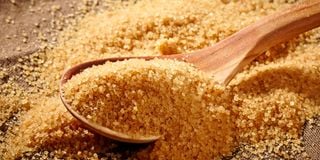Premium
Western Kenya factories top in sugar quality test

Justice Mugambi said it would be speculative to stop an investigation because not every probe yields a charge before the court.
Sugar processed by factories in Western Kenya topped quality tests that were conducted last month even as the government seeks to revive quality-based farmer payments.
Quality tests done on sugarcane from three of the four producing areas last month by the Sugar Directorate, a specialised unit under the Agriculture and Food Authority (AFA), show that the crop from Western Kenya had a purity of 87.99 per cent.
The directorate analysed 851 samples from Western, Nyanza, South Nyanza, and Coast regions to test for sucrose content, soluble solids, moisture content, and fibre in the sugarcane juice.
AFA has already installed Cane Testing Units (CTUs) at the millers. The units were installed to enable factories implement the Quality-Based Cane Payment System, a proposed system that would see farmers paid based on sucrose content rather than the weight of sugarcane.
According to the Crops (Sugar) (General) Regulations, 2018, which are yet to be implemented, the sucrose content quality tests would be used to calculate the pay due to farmers. In the latest quality tests conducted by the directorate in August, sugar from four factories in Western – Butali, Mumias, Nzoia, and West Kenya – had the highest purity score of 87.99 per cent.
Tests from factories in South Nyanza, namely Sony, Transmara, and Sukari had a purity score of 82.87 per cent, while those in the Nyanza region, namely Kibos, Chemelil, and Muhoroni, had a purity score of 81.73 per cent. “The Coast region was unable to report data due to factory closures caused by a shortage of cane and the inability of the mill capacity to run throughout the year,” said the directorate.
The directorate has recommended factories address sugarcane transportation logistics to deliver the raw material in good time for processing and that farmers use better harvesting techniques to cut the inclusion of extraneous material such as trash. “Establishment of a competitive mill in the coast region will help with continuous milling within the region and avoid wastage of already matured cane,” it added.
The Sugar Pricing Committee is currently the entity in charge of setting minimum returns paid by millers to farmers. Farmers have consistently opposed the minimum prices set by the committee arguing that they are too low to cover the costs associated with production.
The directorate argues that the switch to the quality-based payment system will help bridge this conflict. “This system will not only benefit the farmers but will also transform the entire sugar industry by ensuring more efficient milling processes,” it said.





